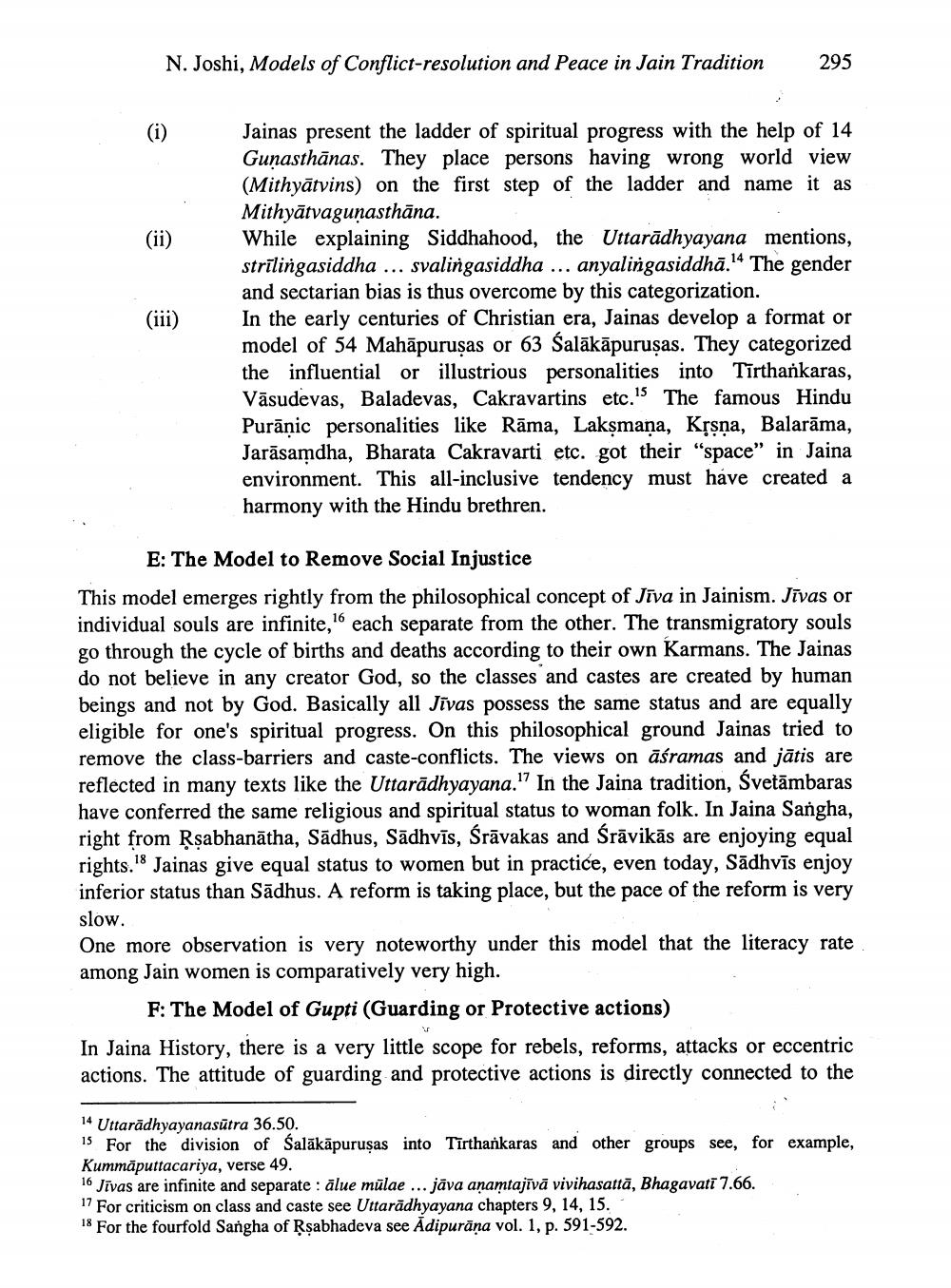________________
N. Joshi, Models of Conflict-resolution and Peace in Jain Tradition
295
(i)
(iii)
Jainas present the ladder of spiritual progress with the help of 14 Gunasthānas. They place persons having wrong world view (Mithyātvins) on the first step of the ladder and name it as Mithyātvagunasthāna. While explaining Siddhahood, the Uttarādhyayana mentions, strīlingasiddha ... svalingasiddha ... anyalingasiddhā.14 The gender and sectarian bias is thus overcome by this categorization. In the early centuries of Christian era, Jainas develop a format or model of 54 Mahāpurusas or 63 Salākāpurusas. They categorized the influential or illustrious personalities into Tīrthankaras, Vāsudevas, Baladevas, Cakravartins etc. The famous Hindu Purānic personalities like Rāma, Lakşmaņa, Krsna, Balarāma, Jarāsamdha, Bharata Cakravarti etc. got their "space" in Jaina environment. This all-inclusive tendency must have created a harmony with the Hindu brethren.
E: The Model to Remove Social Injustice This model emerges rightly from the philosophical concept of Jiva in Jainism. Jīvas or individual souls are infinite, each separate from the other. The transmigratory souls go through the cycle of births and deaths according to their own Karmans. The Jainas do not believe in any creator God, so the classes and castes are created by human beings and not by God. Basically all Jīvas possess the same status and are equally eligible for one's spiritual progress. On this philosophical ground Jainas tried to remove the class-barriers and caste-conflicts. The views on āśramas and jātis are reflected in many texts like the Uttarādhyayana." In the Jaina tradition, Svetāmbaras have conferred the same religious and spiritual status to woman folk. In Jaina Sangha, right from Rsabhanātha, Sādhus, Sadhvīs, Śrāvakas and Śrāvikās are enjoying equal rights. 18 Jainas give equal status to women but in practice, even today, Sādhvīs enjoy inferior status than Sādhus. A reform is taking place, but the pace of the reform is very slow. One more observation is very noteworthy under this model that the literacy rate among Jain women is comparatively very high.
F: The Model of Gupti (Guarding or Protective actions)
In Jaina History, there is a very little scope for rebels, reforms, attacks or eccentric actions. The attitude of guarding and protective actions is directly connected to the
14 Uttarādhyayanasūtra 36.50. 15 For the division of Salākāpurusas into Tīrthankaras and other groups see, for example, Kummāputtacariya, verse 49. 16 Jīvas are infinite and separate : ālue mūlae ... jāva anamtajīvā vivihasattā, Bhagavati 7.66. 17 For criticism on class and caste see Uttarādhyayana chapters 9, 14, 15. 18 For the fourfold Sangha of Rşabhadeva see Adipurāna vol. 1, p. 591-592.
hadeva see Achiyana chapters 9, 14., asattā, Bhagavatt 7.66.




